The marriage of dinosaurs and cinema has captivated audiences for generations, but few realize just how far back this relationship stretches in film history. Long before “Jurassic Park” revolutionized special effects and dinosaur portrayals on screen, pioneering filmmakers were bringing these prehistoric creatures to life through innovative, if primitive by today’s standards, techniques. The earliest dinosaur films represent not just landmarks in cinema history, but also fascinating time capsules that reveal how scientific understanding and popular conceptions of dinosaurs have evolved over more than a century. These groundbreaking productions laid the foundation for what would become one of cinema’s most enduring subjects and demonstrated the public’s enduring fascination with these ancient reptiles.
The Dawn of Dinosaur Filmmaking
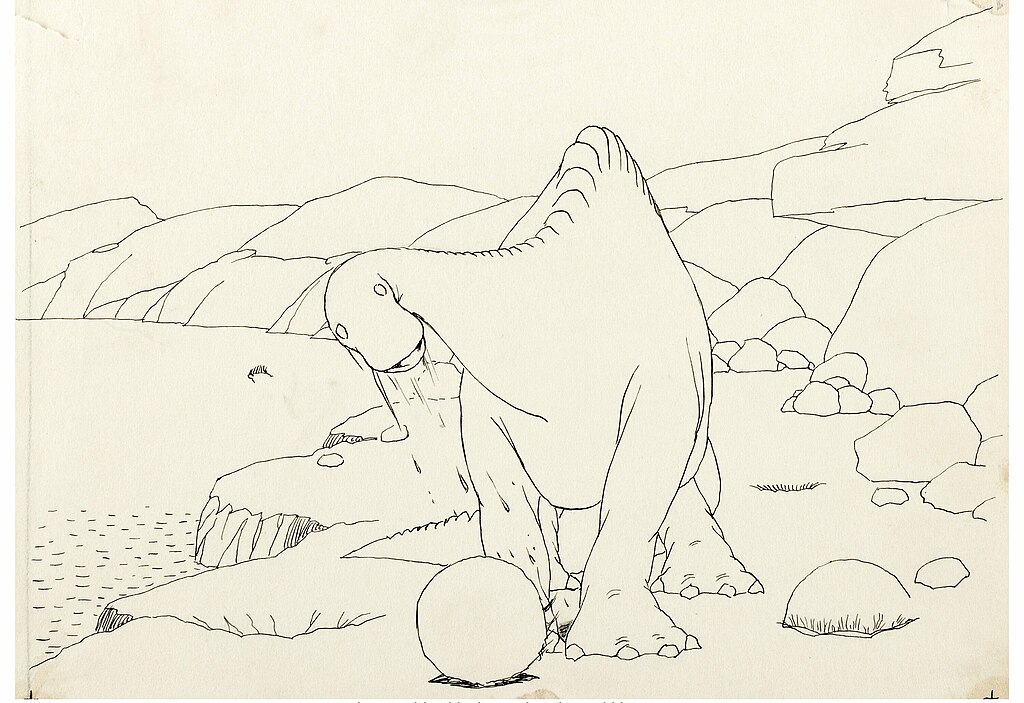
The first true dinosaur movie ever created was “Gertie the Dinosaur,” an animated short film directed by American cartoonist Winsor McCay and released in 1914. This groundbreaking six-minute film featured a brontosaurus (now known as Apatosaurus) performing tricks at the command of her animator. McCay painstakingly drew thousands of individual frames to create fluid motion, with each drawing requiring precise modifications from the previous one to maintain consistency in Gertie’s appearance and movements. The film premiered as part of McCay’s vaudeville act, where he would appear to interact with the projected dinosaur, creating the illusion of controlling her actions. Gertie represented not just the first dinosaur on film, but also one of the first examples of character animation, establishing techniques that would become fundamental to the entire animation industry.
Winsor McCay: The Visionary Behind Gertie
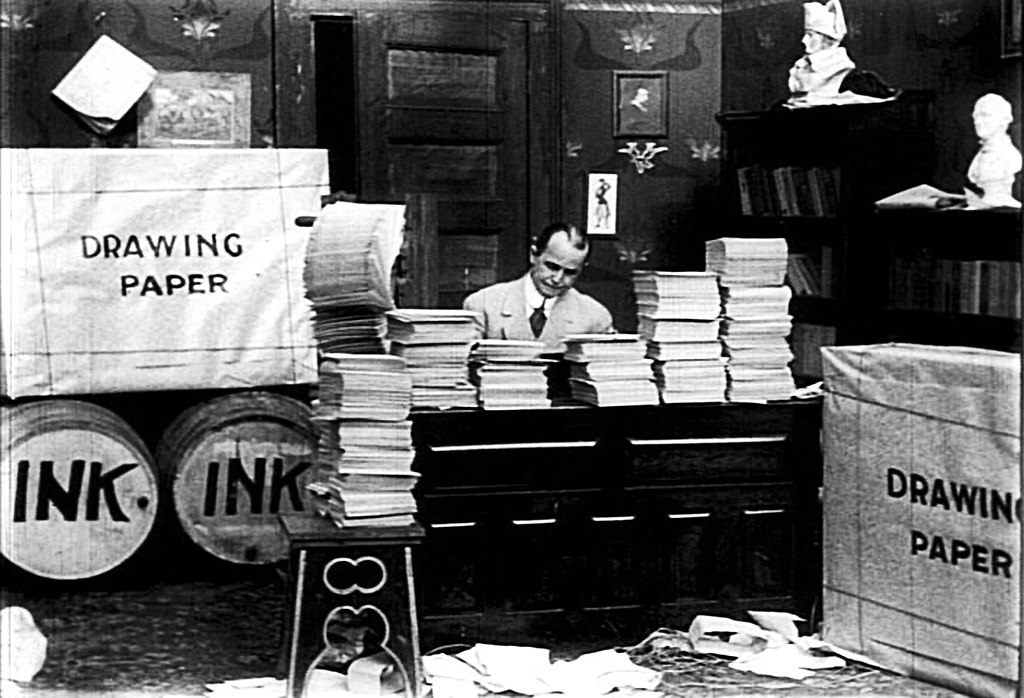
Winsor McCay was already famous for his newspaper comic strip “Little Nemo in Slumberland” when he ventured into animation. An artistic prodigy with extraordinary drafting skills, McCay brought his meticulous attention to detail and innovative visual storytelling to the emerging medium of animated film. To create Gertie, McCay drew approximately 10,000 drawings on rice paper, then mounted them on cardboard to be photographed. Unlike later animation that employed teams of artists, McCay completed virtually all the work himself, making the achievement even more remarkable. His background in comic strips gave him a natural understanding of how to convey personality through visual means, allowing him to infuse Gertie with distinct character traits that made her endearing to audiences. McCay’s pioneering work essentially invented character animation as we know it today, establishing principles that would be followed by generations of animators.
The Technology Behind Gertie’s Creation
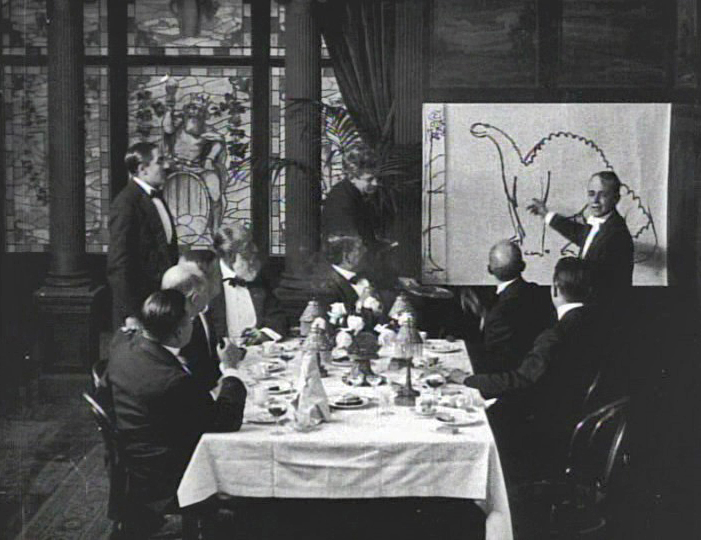
The technical challenges involved in creating “Gertie the Dinosaur” were formidable by 1914 standards. McCay worked without the benefit of animation cels, which hadn’t yet been developed, meaning he couldn’t separate characters from backgrounds as later animators would. Instead, he had to redraw every element in each frame, including static background features like mountains and trees. To maintain consistency across thousands of drawings, McCay created an ingenious registration system using holes punched in the corners of papers that could be aligned over pegs. He also traced background elements using illumination from below (a precursor to the animation lightbox) to ensure they remained stationary from frame to frame. The film was shot using a primitive hand-cranked camera, with each drawing photographed individually. When projected at standard speed, these sequential images created the illusion of fluid movement that amazed audiences of the era.
Gertie’s Place in Animation History

The significance of “Gertie the Dinosaur” extends far beyond its dinosaur subject matter. The film is widely recognized as a watershed moment in animation history that demonstrated animation could be more than simple moving images – it could create characters with personality and emotional depth. Before Gertie, animation primarily consisted of transformation sequences or simple movements, but McCay showed that drawings could convey the impression of a living, breathing character with distinct personality traits. Walt Disney himself acknowledged McCay’s influence on his own work and the development of character animation at Disney Studios. In 2004, “Gertie the Dinosaur” was selected for preservation in the United States National Film Registry by the Library of Congress as being “culturally, historically, or aesthetically significant,” cementing its place as one of the most important animated films ever made.
Scientific Accuracy in Early Dinosaur Films
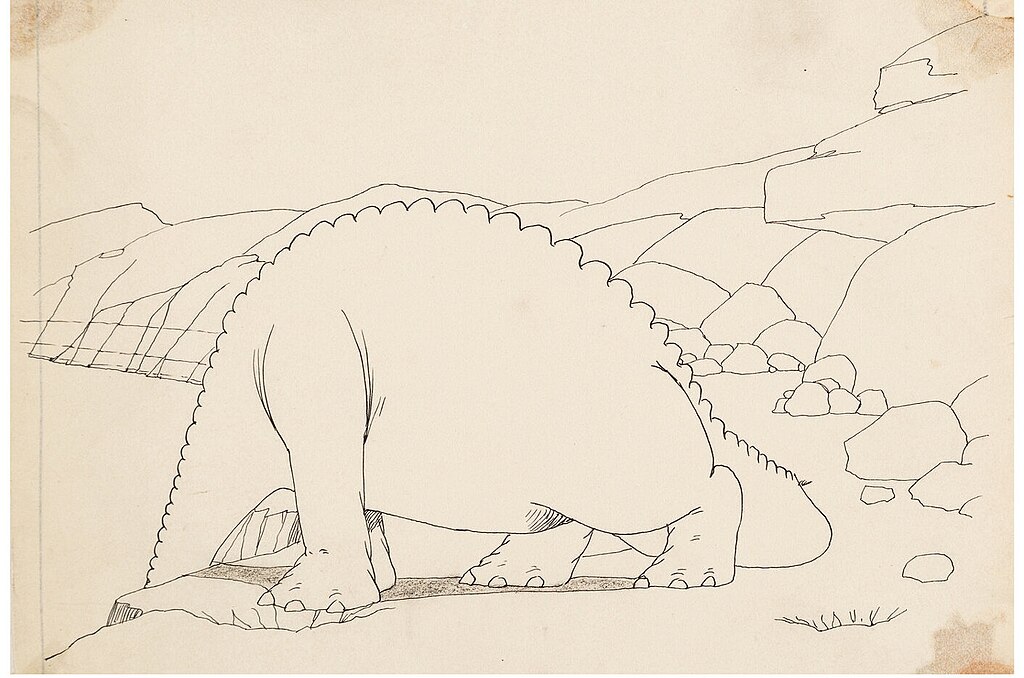
By modern paleontological standards, Gertie’s depiction was far from scientifically accurate, but it actually reflected the scientific understanding of dinosaurs in the early 20th century. McCay based Gertie’s appearance on museum illustrations and reconstructions of the time, which portrayed sauropods as lumbering, lizard-like creatures that often stood in water to support their massive weight. This portrayal aligned with the predominant scientific view of the era that dinosaurs were slow, cold-blooded reptiles. Gertie’s behaviors, while anthropomorphized for entertainment purposes, included elements that scientists of the time believed were possible for dinosaurs, such as consuming large amounts of vegetation. The film even showed Gertie lifting her entire body weight to perform tricks, which, while fanciful, inadvertently predicted later discoveries about sauropod agility that wouldn’t be scientifically recognized until decades later.
From Stage to Screen: Gertie’s Vaudeville Origins

Gertie began her life not as a standalone film but as part of an interactive vaudeville performance. McCay would stand on stage beside the projected film with a whip, appearing to command the dinosaur to perform various tricks. This interactive element made the performance not just a passive viewing experience but an early form of multimedia entertainment. McCay would call out commands, and Gertie would seemingly respond, creating the illusion of communication between animator and animated creation. When McCay appeared to toss an apple into the screen, Gertie would catch and eat it, delighting audiences with this apparent crossing of dimensional boundaries. The stage show was so popular that McCay toured with it for several years before releasing a modified version as a standalone film that included a live-action prologue explaining the animation process to viewers who wouldn’t have the benefit of seeing the vaudeville performance.
The Lost Dinosaur Films of the Silent Era

Following Gertie’s success, several other dinosaur films emerged during the silent era, though many have been lost to time. The most significant of these was “The Ghost of Slumber Mountain” (1918), directed by Willis O’Brien, who would later create the special effects for “King Kong.” This short film combined live action with stop-motion animation to show dinosaurs in a more realistic setting than Gertie’s cartoon world. Another notable lost film is “The Dinosaur and the Missing Link” (1917), also by O’Brien, which featured prehistoric humans alongside dinosaurs. Arthur Conan Doyle’s “The Lost World” (1925) represented the next major advancement in dinosaur filmmaking, utilizing sophisticated stop-motion techniques to bring dinosaurs to life in what many consider the first true dinosaur blockbuster. These early films, despite their technical limitations, helped establish dinosaurs as a subject of enduring fascination for filmmakers and audiences alike.
The Cultural Impact of the First Dinosaur Film

Gertie the Dinosaur made an indelible mark on American popular culture at a time when public interest in dinosaurs was already growing due to high-profile museum exhibitions and fossil discoveries. The film helped transform dinosaurs from scientific curiosities into entertainment figures with distinct personalities. Gertie merchandise, including toys and picture books, appeared shortly after the film’s release, marking one of the earliest examples of character licensing in animation history. Newspapers across the country featured reports of Gertie’s performances, with many reviewers expressing astonishment at how lifelike the animated dinosaur appeared. The film also helped legitimize animation as an art form worthy of serious attention at a time when the medium was still in its infancy. By demonstrating that drawings could create emotional connections with viewers, McCay elevated animation from a technical novelty to a storytelling medium.
The Evolution of Dinosaur Depictions in Early Cinema

The portrayal of dinosaurs in film underwent significant evolution in the years following Gertie’s debut. While Gertie was a cartoon character with human-like behaviors, filmmakers soon sought more naturalistic depictions. Willis O’Brien’s stop-motion dinosaurs in “The Ghost of Slumber Mountain” and later “The Lost World” attempted to portray dinosaurs as actual animals in realistic environments. These films utilized clay and rubber models with articulated skeletons that could be manipulated frame by frame to create lifelike movement. The scientific understanding informing these depictions remained limited by contemporary paleontology, resulting in dinosaurs that still moved like giant lizards rather than the more dynamic creatures we now understand them to be. Nevertheless, each film built upon the technical and artistic achievements of its predecessors, gradually refining how dinosaurs were brought to life on screen and establishing conventions that would influence dinosaur films for decades to come.
Gertie’s Legacy in Modern Dinosaur Films

The direct line from Gertie to modern dinosaur blockbusters like “Jurassic Park” might not be immediately apparent, but the connection is undeniable in terms of both technical innovation and storytelling approaches. Gertie established the precedent of giving dinosaurs distinct personalities and emotional characteristics, a tradition that continues in contemporary dinosaur films where prehistoric creatures often display recognizable personality traits. The technical pioneering spirit that drove McCay to create thousands of drawings by hand finds its modern parallel in the groundbreaking CGI work that brought dinosaurs to convincing life in later films. Even the marketing approach—using dinosaurs as the central attraction rather than human characters—began with Gertie and continues today. When the velociraptors in “Jurassic Park” display intelligence and personality, they follow in the footsteps of cinema’s first dinosaur star who captivated audiences with her playful and sometimes stubborn character over a century earlier.
Restoration and Preservation Efforts
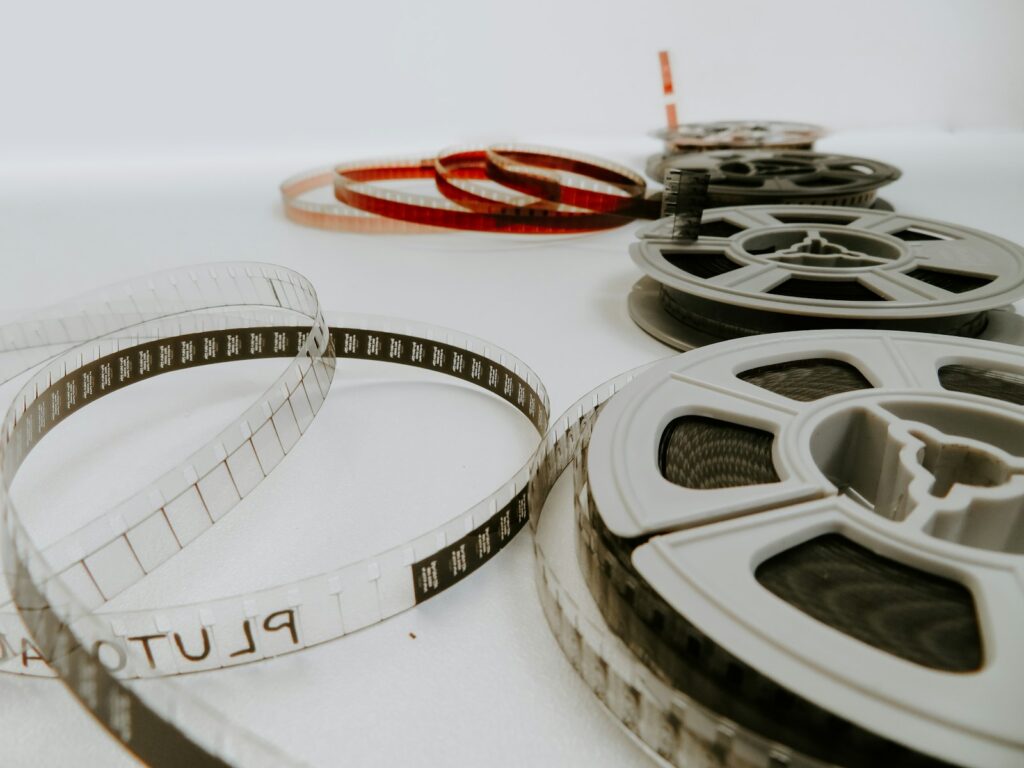
Over the decades, preserving “Gertie the Dinosaur” has presented significant challenges for film archivists. The original drawings and many early prints of the film deteriorated or were lost, requiring painstaking restoration work to maintain this piece of cinema history. In the 1960s, animation historians began serious efforts to locate, restore, and preserve McCay’s work, recognizing its tremendous historical importance. Digital technology has since allowed for more thorough restoration, removing scratches and damage while preserving the authentic character of the original animation. The film has been released in various formats over the years, from 16mm prints for educational purposes to digital versions available in animation collections. The Library of Congress now maintains preserved copies as part of its National Film Registry, ensuring that future generations can experience this groundbreaking moment in both dinosaur representation and animation history.
Inspired Attractions: Gertie’s Theme Park Legacy
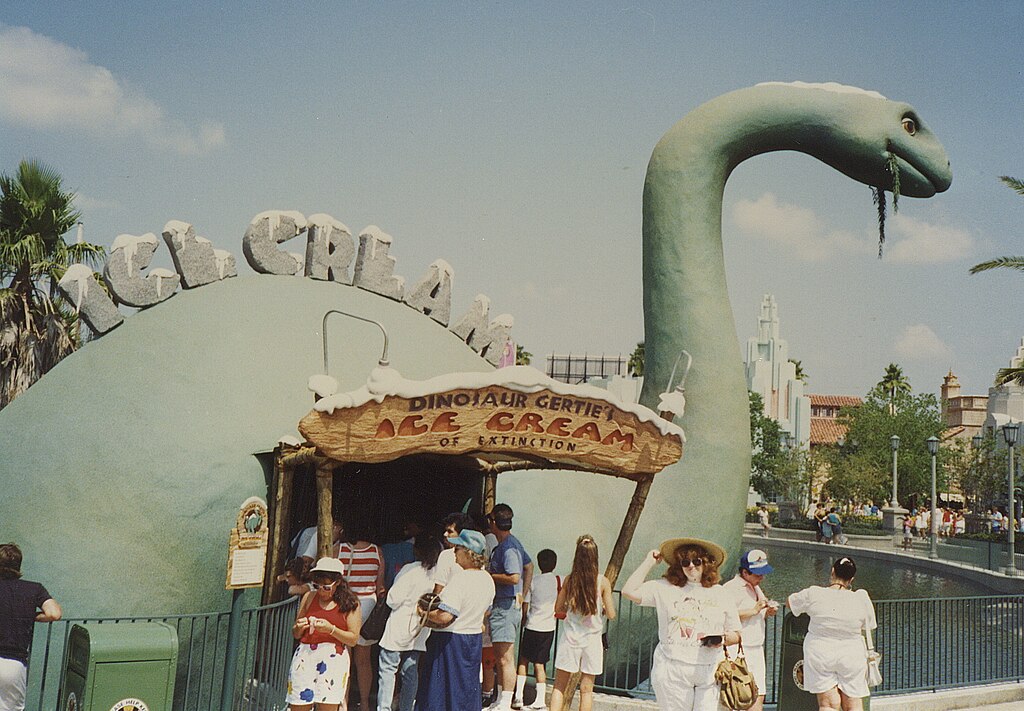
Gertie’s cultural impact extends beyond the screen and into the physical world of theme park attractions. At Disney’s Hollywood Studios in Walt Disney World, a Gertie-shaped ice cream stand called “Gertie the Dinosaur” pays homage to this animation pioneer. Built in 1989 as part of the Echo Lake area, this 50-foot-tall concrete dinosaur serves as both a functional snack location and a tribute to animation history. The structure was designed to reflect the “California Crazy” architectural style popular in early 20th-century Los Angeles, where buildings were often constructed in whimsical shapes to attract customers. Disney Imagineers deliberately included this tribute to acknowledge McCay’s fundamental influence on their own animation tradition. The attraction represents a rare case of a competitor openly acknowledging the debt owed to a pioneer who preceded their own company’s founding, demonstrating the profound respect animation professionals hold for McCay’s groundbreaking work.
Looking Back, Looking Forward: The Enduring Appeal of Dinosaurs on Film
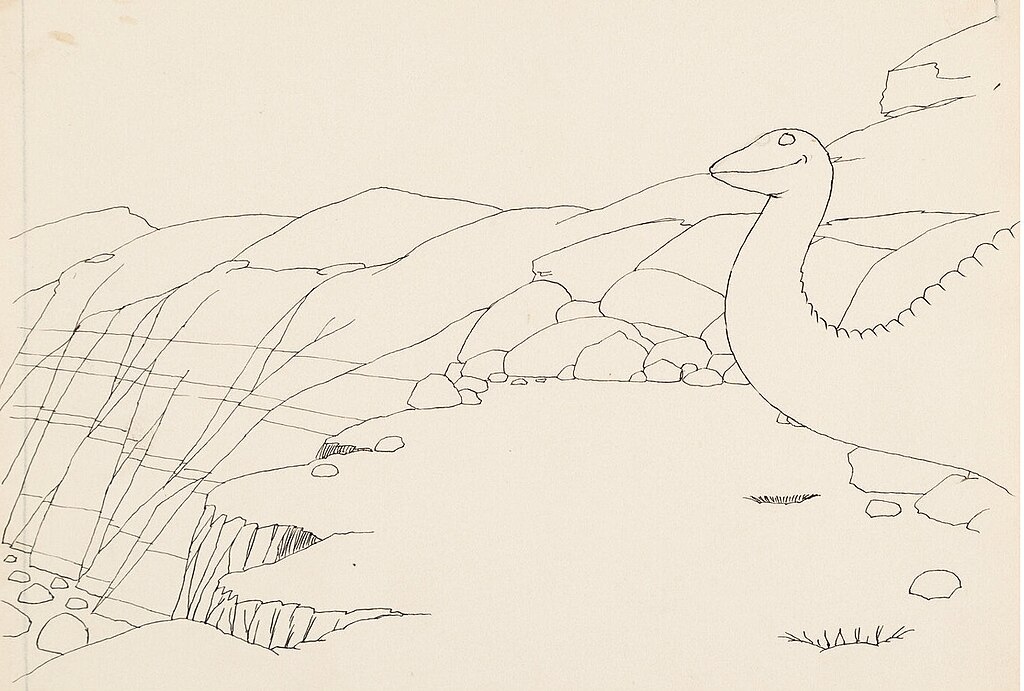
More than a century after Gertie first delighted audiences, dinosaurs remain one of cinema’s most popular subjects, appearing in blockbusters that continue to push the boundaries of special effects technology. This enduring fascination speaks to the timeless appeal of these mysterious creatures that capture our imagination precisely because they exist only through scientific reconstruction and artistic interpretation. Each generation of filmmakers has reimagined dinosaurs according to contemporary scientific understanding and cultural attitudes, from the lumbering behemoths of early cinema to the swift, intelligent predators of modern films. Throughout this evolution, the fundamental appeal remains consistent: dinosaurs represent a tangible connection to Earth’s distant past that is simultaneously alien and familiar. As film technology continues to advance, each new dinosaur spectacle builds upon the foundation laid by Winsor McCay and his groundbreaking animated apatosaurus, who, with personality and charm, established dinosaurs as cinema stars in their own right.
From hand-drawn animation to stop-motion, from miniatures to computer generation, the technical approaches to bringing dinosaurs to life on screen have evolved dramatically since Gertie’s debut. Yet the fundamental goal remains unchanged: to transport audiences to a time when these magnificent creatures ruled the Earth. The first dinosaur film may seem primitive by today’s standards, but it represented a quantum leap in visual storytelling that continues to influence how we experience prehistory through cinema. As we look back at “Gertie the Dinosaur” from our vantage point in the age of photorealistic digital effects, we can appreciate not just how far dinosaur films have come but how the imagination and innovation of early pioneers laid the groundwork for everything that followed.



